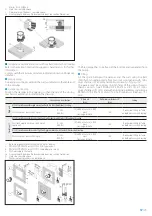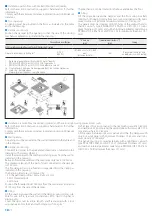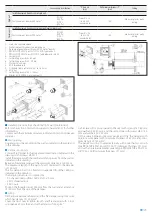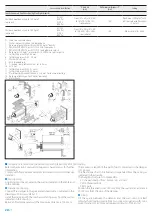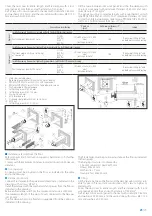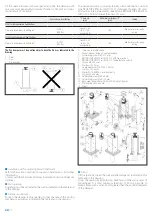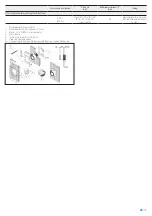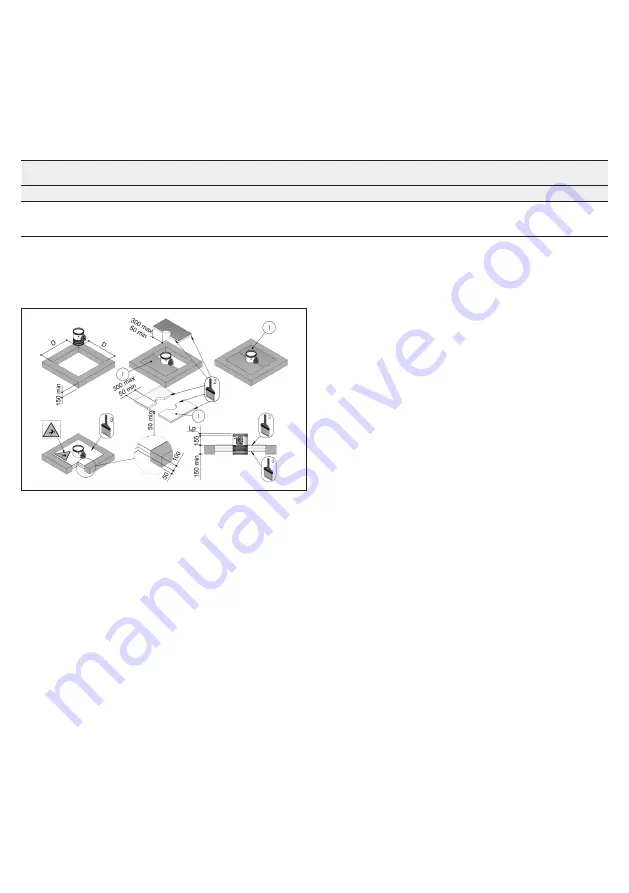
18
/23
Installation within floor with Fire Batt (Weichschott) sealing
Refer to the section Construction supports characteristics for further
information.
Comply with the minimum distances indicated on section Minimum
distances .
Floor opening
A opening must be provided in the floor as indicated in the table
and in the drawing
Damper positioning
Position the damper in the opening so that the side of the closing
mechanism extends as indicated in the drawing.
The mechanism can be located both above and below the floor.
Filling
Fill the space between the damper and the floor using Fire Batt
(Weichschott) sealing made from two rock wool panels with mini-
mum thickness of 50 mm and minimum density of 140 kg/m³.
The panels must be covered on both faces of the wall with endo-
thermic varnish type PROMASTOP E PASTE or HILTI CFS-CT (mini-
mum thickness of 1 mm) and with an internal perimeter sealant type
PROMASTOP E PASTE or HILTI CFS-S ACR (minimum thickness of 1
mm).
Fire resistance classification
“D” hole size
[mm]
Floor minimum thickness “S”
[mm]
Sealing
EI 90 S Installation within floor and Fire Batt (Weichschott) sealing
Floor minimum density 650 kg/m³
EI 90 S
(300 Pa)
(Ø + 600 max) x (Ø + 600
max)
(rectangular hole)
150
Rock wool 140 kg/m³ and
endothermic varnish sealing
1. Rock wool panel 50 mm thick with 140 kg/m³ density.
2. PROMASTOP E PASTE or HILTI CFS-S ACR type sealant
3. PROMASTOP E PASTE or HILTI CFS-CT endothermic varnish
Lp Overlap length between fire damper and duct: see section Dimension
D Hole size: see table above
S Floor minimum thickness: see table above
Installation remote from the vertical rigid wall and the vertical light wall (gypsum blocks wall)
Refer to the section Construction supports characteristics for further
information.
Comply with the minimum distances indicated on section Minimum
distances .
Wall opening
A opening must be provided in the wall as indicated in the table and
in the drawing
Damper positioning
Connect fire damper to the galvanized steel duct as indicated in the
drawing, with 4 screws Ø4.2x13
Install the damper with the mechanism facing away from the wall as
indicated in the drawing.
Between fire damper and wall the maximum distance is 1000 mm.
The maximum length of the part of duct connected to the damper
is 2100 mm
The fire damper has to be fixed and suspended from the ceiling as
indicated in the drawing.
The hanging structure is composed by:
– 2 C-shaped steel profiles 10x41x41x41x10 mm
– 2 M10 threaded rods
– 4 M10 nuts
Position the threaded rods 1000 mm from the wall and at a distance
of 100 mm from the side of the damper.
Filling
Fill the space between the wall and the damper using mortar suit-
able for use in fire resistant constructions, M10 class or higher or
plaster putty.
Cover the duct over its entire length and fire damper with 2 rock
wool panels 50 mm thick and with a density of 140 kg/m³.
Fix first layer of rock wool panel to the duct with screws Ø5 X 60 mm
and washers 40 X 40 mm, and the second one with screws Ø5 X 120
mm and washers 40 X 40 mm.
Fill the space between rock wool panels and the the damper with
one rock wool panel with minimum thickness of 50 mm and mini-
mum density of 140 kg/m³.
The panels must be covered externally with endothermic varnish
type PROSTOP E PASTE or HILTI CFS-CT (minimum thickness of 1 mm)
and with an internal perimeter sealant type PROMOSTOP E PASTE or
HILTI CFS-S ACR (minimum thickness of 1 mm).














